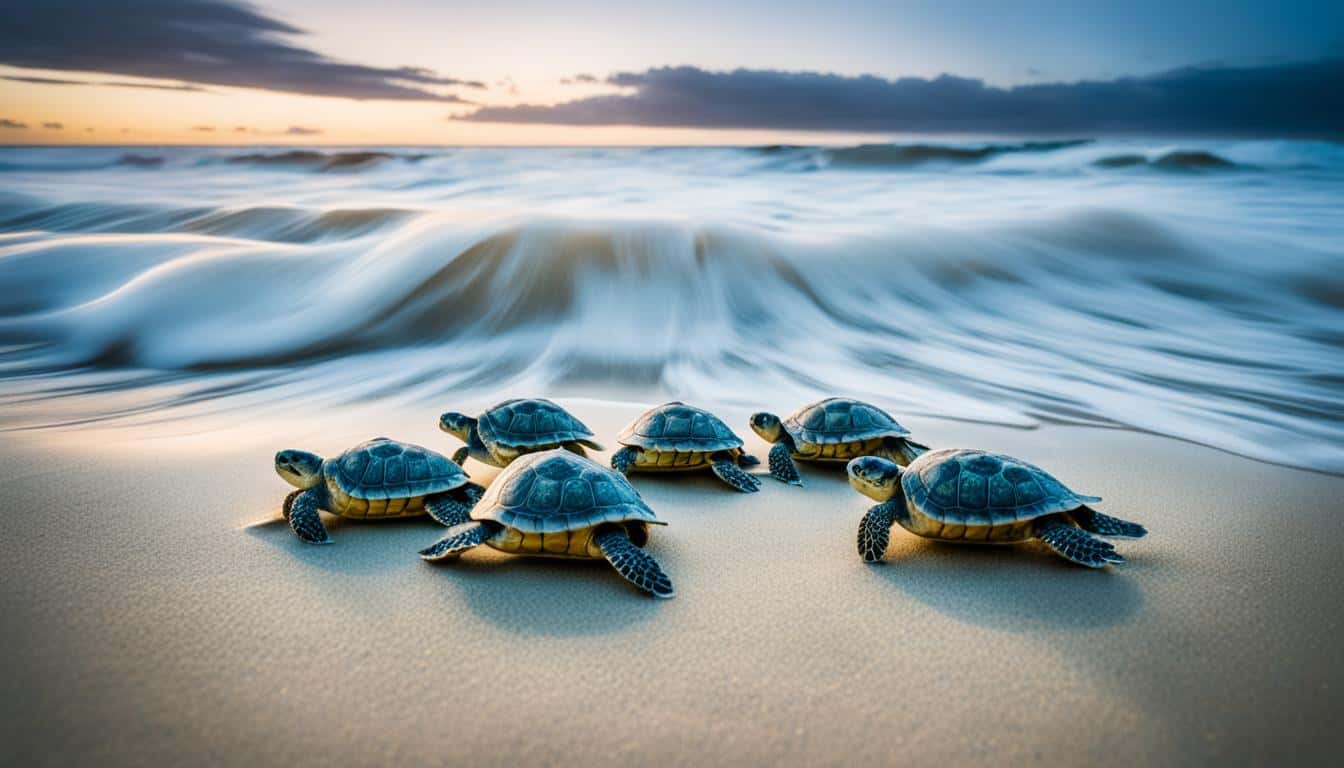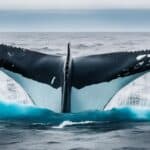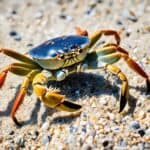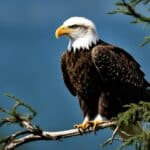The journey of baby sea turtles from their sandy nests to the open ocean is amazing. When they hatch, they start a dangerous yet thrilling adventure. Learning how they survive can teach us a lot about marine life and how to protect them.
Right from the start, baby sea turtles face many challenges. They are driven to reach the sea by instincts that have lasted for millions of years. By looking into what helps them survive, we see how these creatures manage in their tough world.
The Incredible Journey of Baby Sea Turtles
After sea turtle nesting, a new chapter starts for baby sea turtles. These tiny creatures begin a dangerous trip from their nests to the ocean. They face dehydration and predators along the way. Every step is crucial for their survival.
This early journey shapes their future in the ocean.
From Nesting to the Ocean
The move from the nest to the ocean is a big challenge. Baby sea turtles head towards the shore with great determination. But, they face many dangers, like getting lost due to light pollution.
Once in the ocean, they still have many challenges ahead.
The Concept of “Lost Years”
The early years of baby sea turtles are a mystery, known as the “lost years.” During this time, they drift in the ocean for 7 to 12 years. They avoid the continental shelves and hide in seaweed beds for safety and food.
How do baby sea turtles survive?
Baby sea turtles have an amazing journey through the ocean. They face many challenges but have found ways to survive. They use ocean currents and seaweed beds to help them.
Utilizing Ocean Currents for Safe Travel
Baby sea turtles use ocean currents, like the Gulf Stream, to travel long distances. These currents help them find food and save energy. This way, they avoid predators and stay safe as they explore the ocean.
The Role of Seaweed Beds
Seaweed beds, especially those with Sargassum, are vital for baby turtles. They offer food and protection from predators. The warm water under these mats keeps their body temperature right, which is important for growth.
While in these beds, baby turtles can rest and save energy. This is key for their journey ahead.
| Survival Strategy | Benefits |
|---|---|
| Utilizing Ocean Currents | Safe travel, energy conservation |
| Seaweed Beds | Food source, predator protection, temperature regulation |
Predators and Threats to Survival
Even after baby sea turtles reach the ocean, they face many dangers. Natural predators and human threats are big risks for them. This part talks about the dangers that these amazing creatures face.
Natural Predators in Early Life
When they are young, baby sea turtles are hunted by many natural predators. These include:
- Sharks: Sharks are top predators and often see baby sea turtles as easy targets.
- Seabirds: Seabirds can quickly catch baby sea turtles as they enter the water.
- Crabs: Crabs on the beach can eat hatchlings trying to get to the ocean.
Human Impact on Baby Sea Turtles
Humans also pose a big threat to baby sea turtles. The main dangers are:
- Habitat Destruction: Building along the coast can destroy where sea turtles lay eggs and hatchlings go to the sea.
- Light Pollution: Lights near the beach confuse baby sea turtles, leading them away from the ocean.
- Pollution: Trash and oil in the ocean harm the survival and health of baby sea turtles.
Knowing about the dangers from both nature and humans is key to saving baby sea turtles.
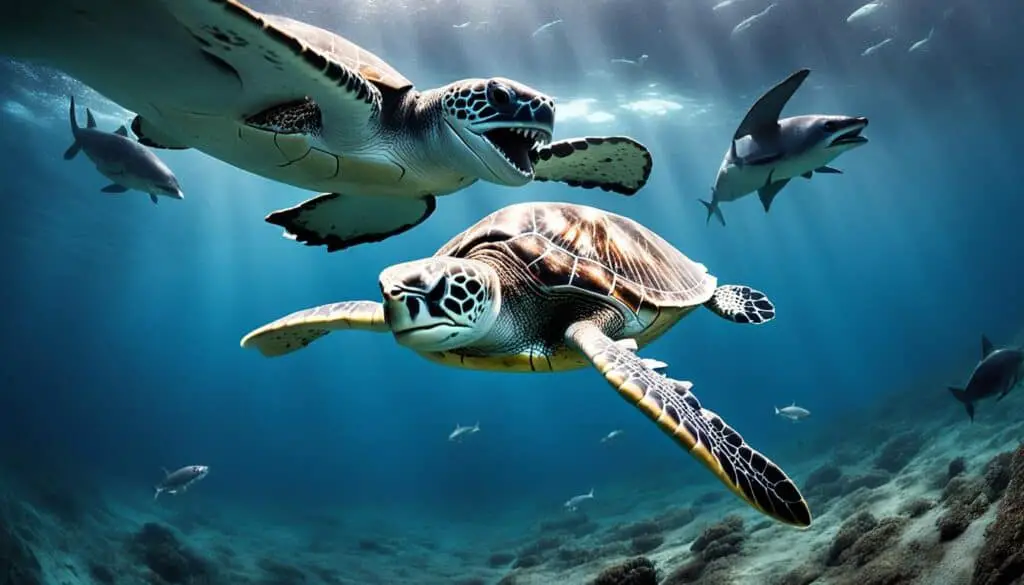
The Importance of Sea Turtle Nesting Habitats
Sea turtle nesting habitats are vital for these amazing creatures. Female sea turtles return to the same beach where they were born to nest. This habit is key for their young to survive. But, their success is threatened by environmental changes and human actions.
Nesting Behavior and Beach Selection
Female sea turtles travel long distances to find the perfect place to nest. They prefer beaches with soft sand and few disturbances. Their choice is influenced by:
- Sand quality: Soft, dry sand is essential for digging nests.
- Temperature: The thermal conditions of the sand can affect hatchling sex ratios.
- Predation risk: Areas with fewer predators help more hatchlings survive.
Climate Change and Its Impact
Climate change is a big threat to sea turtle nesting. Rising sea levels, stronger storms, and changes in beach conditions harm their nesting spots. Here are the main effects of climate change:
| Impact | Description |
|---|---|
| Rising Sea Levels | Encroaches on beach habitats, reducing available nesting sites. |
| Beach Erosion | Destroys nests and reduces the overall area suitable for nesting. |
| Temperature Fluctuations | Affects the development of eggs and hatchling sex ratios. |
| Increased Human Activity | Artificial lighting and beach development disrupt natural nesting behavior. |
Conservation Efforts and Strategies
Recently, we’ve seen a big push for sea turtle conservation. The survival of baby sea turtles depends on what we do. Groups like the Sea Turtle Conservancy and Oceana are working hard. They protect nesting sites and teach people how to behave on the beach.
This helps keep these important places safe. By learning about sea turtles, we can help them in big ways.
New tech like TurtleSense helps track baby sea turtles. It gives real-time updates on their journey from eggs to the sea. This tech helps conservationists act fast if there’s a problem.
It also helps baby sea turtles survive and grow. This is key for keeping their numbers healthy.
Climate change is a big challenge for sea turtles. But, working together at all levels is making a difference. By supporting policies and conservation efforts, we all play a part in protecting nature.
Your help is crucial for making sure baby sea turtles can continue their amazing journey. Together, we can make a big difference for these incredible creatures.
FAQ
How do baby sea turtles survive their early journey to the ocean?
Baby sea turtles use ocean currents like the Gulf Stream to travel safely and find food. These currents help them avoid predators and save energy. This makes their early journey to the ocean successful.
What threats do baby sea turtles face after hatching?
Baby sea turtles face many dangers after they hatch. Sharks, seabirds, and humans are some of the threats. Humans harm them with habitat destruction, light pollution, and pollution from plastics and oil.
How important are nesting habitats for baby sea turtles?
Nesting habitats are key for baby sea turtles. Female turtles often nest where they were born. But, these habitats are at risk from beach erosion, artificial lighting, and climate change.
What is the “lost years” phenomenon in baby sea turtles?
The “lost years” is when young sea turtles drift in ocean currents, avoiding the coast. It’s a mystery how long they spend in this phase. Research says loggerhead sea turtles may spend 7 to 12 years here.
What role do seaweed beds play in the survival of baby sea turtles?
Seaweed beds, especially Sargassum, are vital for baby sea turtles. They offer protection from predators, food, and help control their body temperature. This helps them grow and survive better.
How does climate change affect baby sea turtles?
Climate change harms baby sea turtles by changing their nesting sites. Rising sea levels and beach changes affect their nesting and habitat. This can hurt their survival chances.
What are current conservation efforts for baby sea turtles?
Many groups are working to save baby sea turtles. They monitor nesting sites, teach people about safe beach habits, and push for policies against climate threats. New tech like TurtleSense helps manage nesting events better.
Why is it important to protect baby sea turtles?
Saving baby sea turtles is crucial for the ocean’s health. They are important indicators of ocean health. Their survival affects biodiversity and supports marine life. So, conservation efforts are key to keeping the ocean balanced.

